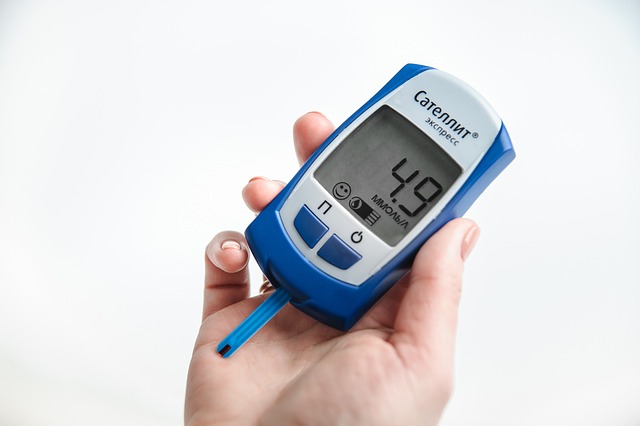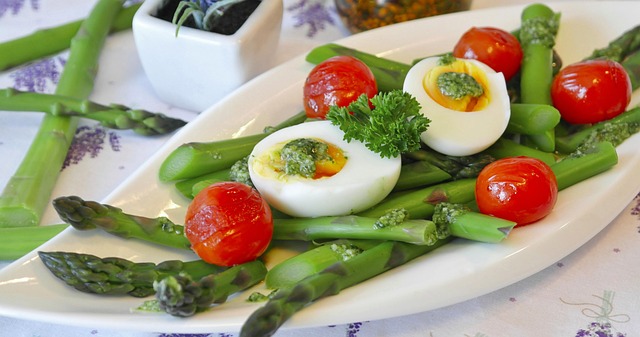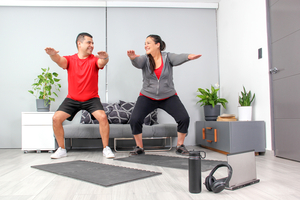How to Reduce Blood Sugar
High blood sugar (blood glucose) can be dangerous. It can happen if you have a high reading when you test your blood glucose, if you get a high value on your glucose test during pregnancy, or if you have prediabetes or diabetes.
Some complications of high blood sugar develop over time, with months or years of high blood sugar. However, it is important to treat high blood sugar immediately because of other complications, such as hyperglycemic hyperosmolar nonketotic syndrome (HHNS), that can happen quickly and be emergency situations. In any case, you can take steps to reduce your blood sugar to prevent harm or further health risks.
Signs of High Blood Sugar
You may or may not notice signs of high blood sugar. They can include:
- Increased thirst, due to the extra sugar in your blood.
- Increased urination, due to the extra water you may drink.
- Blurred vision.
- Fatigue, weight loss, and hunger‚ all because your body is not using sugar properly for fuel. It is just sitting in your blood.
- Infections, foot numbness, and slow wound healing‚ due to sugar damaging your blood vessels and reducing oxygen delivery to parts of your body.
- Kidney damage, chronic gastrointestinal distress, and heart disease‚ due to sugar damaging these parts of your body.
The only way to know for sure if your blood sugar is high is to test it. Your doctor might order a fasting blood glucose, A1C, or oral glucose tolerance test (OGTT) as a routine test or if she suspects that you have diabetes or prediabetes. If you have diabetes, you are probably already testing your blood glucose at home, and you can test an extra time if you think that you may be having a hyperglycemic episode.
How to Reduce Blood Sugar Fast
Say you have diabetes and are testing your blood glucose at home as your doctor recommended. You find that your glucometer gives you a high blood sugar reading. You know that you need to get your blood sugar down to stay safe. What can you do?
Take your medications. Did you skip a dose? If so, your next step depends on which medications you are on. For some medications, you should take a dose as soon as possible. For others, you may need to try another approach. Ask your doctor beforehand so that if you do ever miss a dose, you know what to do.
Drink water. Sometimes, lowering blood sugar levels can be as simple as diluting the sugar. You can do that by drinking water. Of course, be sure to choose water or another low-calorie beverage, and not a sugary beverage!
Exercise. Physical activity is one of the most effective ways to increase insulin sensitivity so your blood glucose can decrease. If your doctor has cleared you to work out, walk, cycle, or do another heart-pumping activity for 15 minutes, and be sure to check your blood sugar after exercising.
Have some protein. Protein helps lower blood sugar and slow digestion. As a bonus, protein can help reduce hunger and satisfy cravings that can be a sign of hyperglycemia. A small snack, such as an ounce of low-fat cheese, 1/2 cup of cottage cheese, a hard-boiled egg, or an ounce of almonds, is enough.
How to Reduce Blood Sugar in Pregnancy
Gestational diabetes is a condition that happens if you did not have diabetes before pregnancy, but you develop high blood sugar while you are pregnant.[1] It becomes more likely during the late second and early third trimesters as insulin resistance increases. While many women are able to meet the higher insulin demands, others develop gestational diabetes.
Gestational diabetes can lead to complications such as high birth weight and low blood sugar for the baby, and pre-eclampsia and high risk for later type 2 diabetes. You are more at risk for the condition if you are obese when you get pregnant, you are black, Hispanic, Asian, or American Indian, or if you are 25 years or older when pregnant. The ways to lower your risk are to lose extra weight if you can with nutritious foods and to exercise regularly.
According to AACE, the goals in gestational diabetes are as follows. Also shown are the ADA's recommendations, which you can see are less strict. [3]
- Fasting upon awakening: 60 to 90 mg/dl (ADA: less than 95 mg/dl).
- Before a meal: 60 to 90 mg/dl.
- 1 hour after a meal: 100 to 120 mg/dl (ADA: less than 140 mg/dl).
The same approaches that help with regular diabetes management of blood glucose in type 2 diabetes are used to help reduce blood sugar in pregnancy. To control blood sugar:
- Eat a healthy diet with vegetables, whole grains, fruit, and portion control, and without many sweets and processed foods.
- Exercise when you can, such as walking or swimming if your doctor agrees that it is safe.
- Take insulin injections or oral blood sugar medication if your doctor prescribes it.
Foods to Avoid with High Blood Sugar
Foods to avoid with high blood sugar are those which drive up your blood sugar or increase your insulin sensitivity. If you have high blood sugar, limit the times you choose the following.
- Foods with added sugars: candy, cookies, pies, muffins, ice cream, sugar-sweetened yogurt, sugary cereal.
- Sugar-sweetened beverages: soft drinks, energy and sports drinks, sweetened or flavored coffee and tea.
- White flour-containing products: white bread, bagels, pita, English muffins, rolls, crackers, and pretzels.
- Refined grains and grain products: white rice and pasta, and refined breakfast cereal.
- Fried foods: fried potatoes (French fries and hash browns), fried chicken and fish, doughnuts, onion rings, cheese sticks.
- Processed meat and fatty red meat: Ribs, fatty steak, pepperoni, salami, sausage, ham and other luncheon meats, hot dogs.
- Boiled potatoes.
- Dried fruit and fruit juice.
Another tip is to never eat refined carbohydrates – sugars and starches – on their own. If you do have refined carbs, be sure you have them with one or more of the following so that their effect on your blood sugar is lower.
- Fiber: add a veggie and choose whole instead of refined grains.
- Lean protein: beans, lentils, nuts, low-fat dairy, fish, egg whites, tofu, and chicken.
- Healthy fat: nuts and peanuts, nut and peanut butters, or avocado.
Foods That Reduce High Blood Sugar Instantly
Actually‚ no food will reduce high blood sugar instantly, since it takes at least 10 to 20 minutes from the time you start eating until the time the digested food gets released into your bloodstream and can affect your blood sugar levels. Still, there are some foods to keep in mind for when you have high blood sugar and you want to lower it.

These are some foods that can help lower blood sugar, along with serving sizes. Remember, you do not need to have too much to have an effect.
- 1/2 to 1 oz. of nuts or peanuts, or 1 tablespoon of peanut or nut butter.
- 3 oz. of salmon or tuna.
- 1 hard-boiled egg or 2 egg whites.
- 1/2 small avocado.
- 1 cup of plain or regular Greek yogurt.
- 1/2 to 1 oz. of unsweetened chocolate.
- 1/2 cup of cooked beans or lentils.
Diet and Exercise to Reduce Blood Sugar
Aside from taking any medications that you may be prescribed, losing extra weight, getting active, and eating right can be the best ways to reduce blood sugar.
Supplied by BMI Calculator USA
Losing weight: Any pounds that you lose if your body mass index is over 30 can lower your blood sugar dramatically. These strategies are simple and effective.
- Eating more vegetables.
- Cutting portion sizes of high-calorie foods.
- Eating less often at restaurants, or eating half of the amount you are served.
- Swapping sugary beverages for water and fruit for dessert.
- Steaming, grilled, and baking instead of frying with added fats.
You can check your BMI here. Overweight is over 25, and obese is over 30.
Getting active: Getting moving increases insulin sensitivity, lowers blood sugar, and also helps you lose weight. This includes dedicated workouts, activity throughout the day, and breaking up sedentary time.
- Dedicated workouts: At home, at the gym, or outside, the goal is to get 30 minutes, most days of the week. Find something you love, whether it is to walk, cycle, or swim, dance, kickbox, or do pilates, or train for and play tennis, basketball, or golf.
- Activity throughout the day: Take the stairs, park further away, and pace your office while you are on the phone. It all adds up – or subtracts – to lower blood sugar.
- Breaking up sedentary time: Sitting for too long, even if you went to the gym in the morning, can lead to higher blood sugar. Lower your levels by breaking up your sitting time at least once every 30 to 60 minutes. As little as 1 to 3 minutes of stretching, marching in place, or swinging your arms can help.
Eating right: While weight loss is a significant factor in blood sugar control, eating right also helps reduce blood sugar. What does "eating right" include?
- Carb control: Spread evenly throughout the day a moderate amount of healthy carbohydrates, such as small servings of beans, starchy vegetables, fruit, whole grains and low-fat dairy.
- Fiber consumption: To slow digestion and reduce blood sugar spikes, think about unprocessed plant foods: whole grains, vegetables, fruit, nuts and peanuts, soybeans, beans, and lentils.
- Healthier fats: avocados, olive oil, nuts and peanuts, and especially omega-3 fats from fatty fish and flaxseed.
- Lean proteins: Seafood, chicken, eggs, tofu, low-fat dairy, and beans.
Some research suggests that a low-glycemic diet can be helpful. You can choose one by limiting sugar and refined starches, having fiber, protein, and fat with your carbohydrate sources, and choosing less processed foods, such as whole grains instead of refined.
Home Remedies to Reduce High Blood Sugar
What else can you do in your daily life to reduce high blood sugar? You have opportunities all day, and even all night!
Sleep: Sleep deprivation drives up blood sugar by causing cravings and poor food choices and getting hormones out of whack. Get adequate sleep, and your insulin and other hormones will realign to reduce blood sugar. Remember: sleep is not for lazy people. It is for healthy people who want to be at their best, so make it a priority.
Vinegar: Old wives' tale? Maybe not. Apple cider and other types of vinegar may help lower blood sugar by slowing gastric emptying to reduce the post-prandial (post-meal) blood sugar spike, and suppressing glucose production by the liver if you take it at bedtime. According to research in the "Journal of Diabetes Research," vinegar also increases insulin sensitivity and glucose uptake by muscles.
Chromium: Chromium is necessary for the proper use of insulin, and deficiency can lead to high blood sugar. Good sources include broccoli, spinach, bran cereal, oysters, and cheese. Chromium picolinate is a common form of chromium supplement, but you should ask your doctor before taking any nutritional supplement.
Stress: Too much stress gets your hormones out of balance and increases blood sugar. While you cannot eliminate stress, you can learn to manage it better. Exercise, deep breathing, aromatherapy, and letting go of what you cannot change can all reduce the burden of stress on your body.
Immunity: Catching a cold or getting another illness drives up blood sugar, so do what you can to strengthen your immune system. Besides getting adequate vitamin C from healthy foods such as bell peppers, oranges, and leafy greens, you can reduce infections by washing your hands frequently.
Staying aware: Monitor your blood sugar levels so that you know what is normal for you, how different foods and patterns affect your blood sugar, and when your blood sugar is high. Then you know when and how to react.
The best way to reduce blood sugar may be to use a diabetes app, such as Lark. It can coach you on making the behavior changes that can reduce blood sugar, and alert you to high blood sugar levels that may need attention.












.webp)







